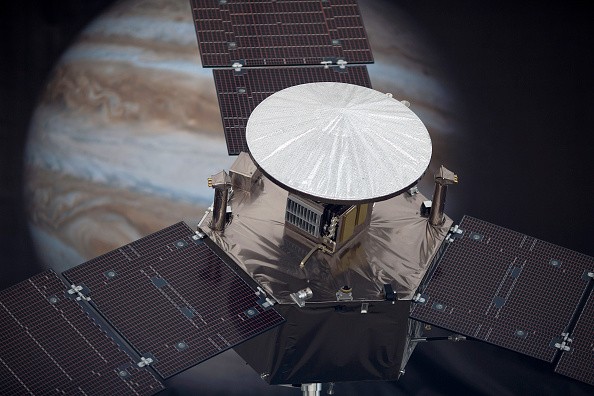The National Aeronautics and Space Administration (NASA) claims that one of the moons of Jupiter is emitting what seems to be FM radio waves. The space agency's Juno spacecraft is the one that discovered the said radio signals on the celestial body.
This spaceship currently orbits Jupiter. It is the first time that FM radio waves were discovered emitted by the moon Ganymede.
"It's not E.T.," clarified Patrick Wiggins, a NASA ambassador to Utah via KTLA's latest report.
"It's more of a natural function," added the ambassador.

Before the space probe discovered the unusual radio signals, it was traveling across the polar region of Jupiter. This is where the planet's magnetic field is lined up to connect with its moon Ganymede.
What does Jupiter's moon's FM radio waves mean?
The FM radio waves that are coming from the Gas Giant's moon is also called decametric radio emission. This radio wave is also called WiFi on Earth.
Jupiter's emitted radio signals were first discovered in 1995. For the past 66 years, astronomers and other space scientists have discovered more about how these radio waves work.

Wiggins also explained that an amateur radio telescope was previously created to detect the planet's electromagnetic radiation. This technology was developed by a member of the Salt Lake Astronomical Society.
NASA's Juno was mainly created to study how Jupiter evolves and how the Red Giant formed. The giant space agency previously explained that the space probe can study and observe Jupiter's magnetic fields and gravity.
The spacecraft can also observe the planet's composition, atmospheric dynamics, and evolution. NASA confirmed the emitted FM radio waves are produced by electrons and not E.T.
Juno's space exploration is extended!
Gizmodo previously reported that NASA's Juno, together with InSight lander on Mars, will have extended time for their space missions, following an external review of the space agency.
The independent review panel claimed that InSight and Juno were able to provide exceptional scientific discoveries. It also stated that both spaceships should be allowed to continue their space missions.
The decision wasn't surprising since these spacecraft gathered valuable scientific data, including the FM radio waves on Ganymede. This only means that they can still help NASA discover new space events that are not yet recorded.
For more news updates about NASA's space missions, always keep your tabs open here at TechTimes.
Related Article: Mars has a Chandler Wobble Similar to Earth, Space Probe Finds: Here's What it Means
This article is owned by TechTimes.
Written by: Giuliano de Leon.
ⓒ 2025 TECHTIMES.com All rights reserved. Do not reproduce without permission.




